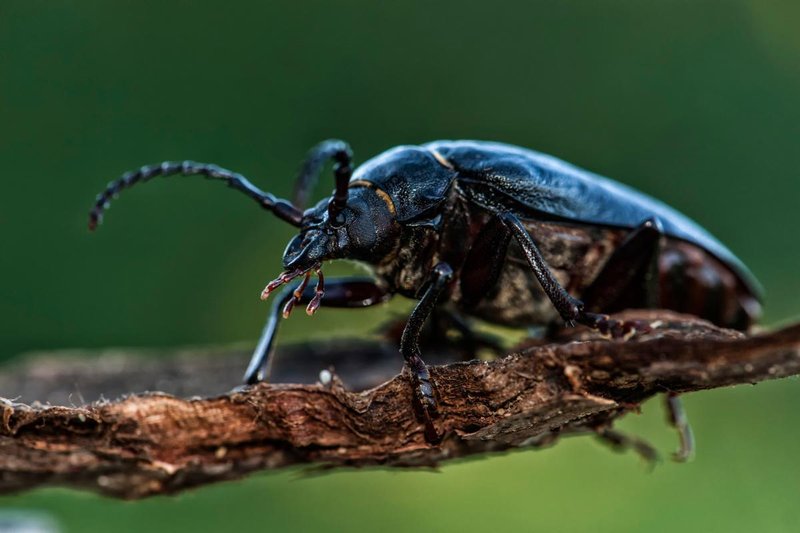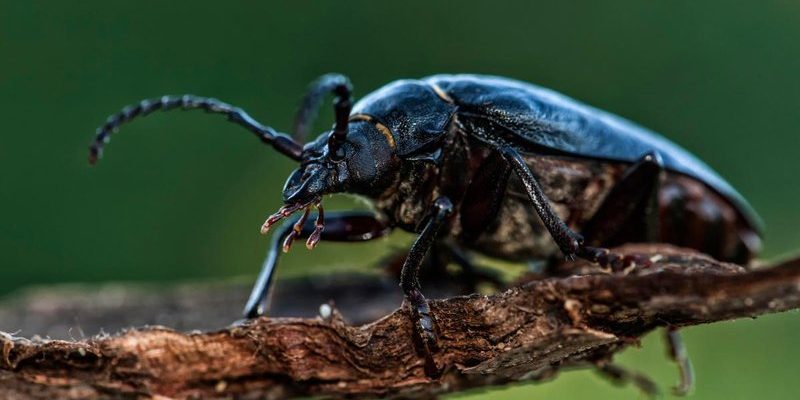
Imagine walking through a forest. The ground is alive with the rustle of leaves, and if you look closely, you might spot a shiny beetle scuttling through the underbrush. These little critters have some surprising tricks up their sleeves when it comes to finding a home and surviving in various conditions. They come in thousands of shapes and sizes, and their habitats are just as diverse—from deserts to wetlands. In this article, we’ll explore the various habitats of beetles and how they’ve evolved to thrive in them.
The Diverse Habitats of Beetles
Beetles can be found in almost every habitat on Earth. Yes, you read that right! Whether it’s forests, grasslands, deserts, or even aquatic environments, there’s a beetle species that calls it home. This adaptability is one of the reasons there are over 350,000 beetle species known today.
In forests, for instance, beetles can often be spotted beneath fallen leaves or inside decaying wood. Some species, like the wood-boring beetles, make their homes in dying and dead trees, playing a crucial role in breaking down organic matter and recycling nutrients back into the ecosystem. Others, like the Ladybug, often inhabit foliage, where they can find food and shelter.
On the flip side, beetles can also thrive in dry environments. The desert beetle, for example, has mastered the art of surviving with limited water. These little guys often have specialized structures on their bodies that help them collect moisture from the air, allowing them to thrive despite the harsh conditions.
How Beetles Adapt to Their Environment
Adaptation is the name of the game when it comes to beetles. Each species has developed unique features that help them thrive in their specific habitats. Take the tortoise beetle; it’s famous for its ability to blend in with its surroundings because of its color and shape. This camouflage provides excellent protection against predators.
Additionally, some beetles have impressive defensive mechanisms. For instance, the bombardier beetle can spray a hot, toxic chemical at potential threats. This ability not only deters predators but also demonstrates how beetles can evolve specialized skills for survival.
Moreover, beetles are also known for their reproductive strategies. Many species lay eggs in places that offer the best chance for their larvae to survive. For example, some female beetles will lay their eggs in decaying wood to ensure a ready food supply once they hatch. It’s like ensuring the fridge is stocked before going away for vacation!
Life in Aquatic Habitats
You might be surprised to learn that some beetles have taken to the water! Water beetles are fascinating creatures that have adapted to life beneath the surface. These beetles have streamlined bodies that aid in swimming and air-filled sacs that help them stay buoyant.
A great example is the diving beetle, known for its ability to dive underwater to hunt for prey or evade predators. They often have fine hairs on their bodies to trap air bubbles, allowing them to breathe while submerged. It’s a clever method of staying hidden while still being able to move freely in search of food.
These adaptations show how even small creatures can conquer the challenges of their environments. By evolving unique traits, aquatic beetles can maintain their positions in the food chain, balancing ecosystems both above and below water.
Urban Beetles: Thriving in Human Environments
Believe it or not, beetles have also made themselves at home in cities and towns. Urban environments might seem inhospitable at first glance, but many beetles have learned to adapt to life alongside humans. For instance, the carpet beetle can be found living in homes, feasting on fabric and organic materials.
You might be wondering how beetles adjust to the unique challenges of urban life. They often find shelter in cracks and crevices, and their diet can change based on available resources. Some beetles feed on detritus, while others might feast on discarded food or decomposing matter.
These resourceful habits showcase just how adaptable beetles are. They find ways to thrive, even when living in a world dominated by humans and our structures.
The Role of Beetles in Ecosystems
Why does all this matter? Beetles play a significant role in maintaining the health of ecosystems. They are pollinators, decomposers, and prey for many other animals, making them essential for ecological balance.
For example, beetles help break down dead plant and animal matter, returning nutrients to the soil. The rove beetle, for instance, actively hunts pests and contributes to pest control in gardens. Their presence can keep ecosystems functioning smoothly, benefiting other plant and animal life.
Furthermore, by participating in pollination, many beetles ensure that plants can reproduce and create food sources for themselves and other creatures. It’s a fascinating web where each beetle contributes to the overall health of its environment.
Conservation: Protecting Beetle Habitats
Unfortunately, many beetle species face threats due to habitat loss, pollution, and climate change. Protecting their habitats is essential for preserving biodiversity.
Efforts such as creating conservation areas and promoting sustainable practices can help. Simple actions like reducing pesticide use and preserving natural habitats can make a big difference. By being mindful about how we interact with the environment, we can support beetle populations and, in turn, the ecosystems they help sustain.
Beetles may seem small and inconsequential, but their impact is enormous. By understanding where they live and how they adapt, we can appreciate their role in the world around us.
So there you have it—beetles are remarkable little creatures that have adapted to thrive in various environments. From forests to urban settings, these tiny insects showcase incredible resilience and diversity. By understanding where beetles live and how they adapt, we can deepen our appreciation for the natural world. It’s a reminder that even the smallest creatures play an important role in the grand tapestry of life. Just like you, every beetle has its place in this world, contributing to the beauty and balance of nature.

